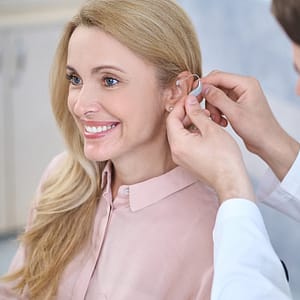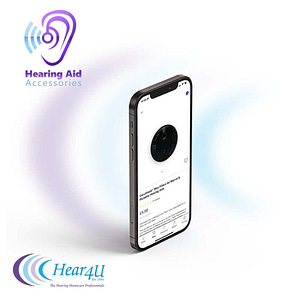As the days draw shorter, the leaves turn from brilliant green to warm shades of red, orange and gold and the weather drifts from listless summer days to melancholic showers, it’s pertinent to keep your hearing aids in good condition.
With the beginning of the new season, it can be easy to overlook your hearing aid friends. However, if you want to get the best out of them, then a little bit of maintenance and a few extra precautions can do wonders. In that spirit, we’ve compiled a list of common issues that people face in the Autumn months, each with our own recommended solution to go with it.
Rain, Fog and Walking the Dog
When it comes to this time of year, the weather can turn in an instant. Anyone familiar with Britain’s notoriously wet and windy shores will likely already know that it can rain at any time! That said, it always helps to prepare for it: hearing aids can be vulnerable to water damage, and although many modern devices are showerproof and thus more resilient towards dampness than ever before, it’s wise to dry them out as soon as possible once you’re home.
Foggy days can be particularly deceiving, as the excess moisture in the air can get into your hearing aids without you realizing it. The same is true of condensation, as, much like with glasses, temperature changes can lead to sudden moisture build-up in your hearing aids. Furthermore, one should be especially careful if you’re out walking your pet in poor conditions – it’s easier to get distracted!
Our Advice
Thankfully, most modern hearing devices come with their own ‘dry box’ which you can use to siphon off any water exposure. However, not all of them do. There are some easy DIY solutions that you can use instead, though:
- Dry, uncooked white rice can be used to soak up moisture. Simply place the rice and your device into a sealed jar and leave for a few hours. This can work well for other appliances as well, but always make sure to remove the batteries first!
- If you happen to have any loose packets of silica gel, then that can work just as well. Follow the above method and the results should be just as effective.
Hats, Hoods, Wind and Feedback
For those of us with moderate to profound hearing loss (and therefore have devices that require substantial amplification), wearing a hat or hood can cause an irritating amount of feedback in our hearing aids. A strong, rasping wind can make this even more difficult, despite the noise-cancelling features many modern hearing aids boast.
If you’ve yet to experience it, feedback occurs when things get too close to the microphone on your device. This causes the amplified sound to be picked up and re-amplified through the mic again, resulting in a high-pitched whistling that can seriously ruin your day. Hoods are notoriously annoying in this regard due to their tendency to move around and the large amount of space within them: in effect, they create a kind of ‘wind tunnel’ that can gravely impede your appreciation of your surroundings.
Our Advice
A close-fitting headband, hat or hood that fits nice and tight and doesn’t move around a lot may cause a lot fewer feedback issues than your average parka or raincoat hood. It’s also possible to use a dome-shaped umbrella as a windbreaker, as this will still protect you from the rain should you need it. If you can get hold of a transparent one, that’s even better as it will help with visibility.
Out and About After Dark
The days are getting shorter, and that’s the simple truth; but, that doesn’t mean that some of us don’t still want to pursue active lives. If you’re out after nightfall, you don’t want your hearing aid batteries (or charge) to let you down. Everyone knows how difficult it can be to replace them on the move, especially with cold hands or gloves. What’s more, batteries are particularly prone to damage in cold weather, so it’s best to avoid storing them in places that won’t become overly cold like a car glovebox.
Our Advice
There are multiple ways in which you can test the remaining capacity of your hearing aid batteries or charge amount. Hearing aid battery testers, such as those sold here, are a great addition for the person on the move, as they allow you to always keep on top of exactly how much you’ve got left. Rechargeable hearing aids are slightly different. You should be able to monitor their charge at all times, but of course, not all chargers are particularly quick. Fortunately, there are a whole host of super-fast chargers on sale here should you feel like your current charger isn’t cutting it. In addition, some of these chargers come with a dehumidifier as standard, making them ideal companions for the season to come.
So there we have it, simple tips for keeping on top of your hearing aids during those rustic Autumn months. Remember to wrap up warm, take care of yourself and enjoy the views!



